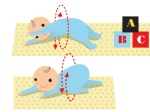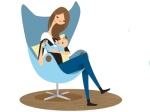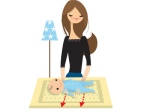Playing together with others is an art which has to be learned. If you think about starting a play party for your child here we show you what you can do to make this event a great experience for all. Starting today and every day for the following 4 days we will touch a different aspect of playing is easy. Please read our suggestions, plus if you like, comment our articles and let us know your personal experiences at your child’s play party.
How to make the first  play date a success!
play date a success!
A children get together under the age of four is not a “tea party” for parents. There is constant dispute to be settled, help and motivation has to be given when needed. You probably think: This is something they can do it on their own? No they cannot, at least not yet. Because: Playing together with others is social learning. Adults need to show how to behave in case one child takes the scoop of the other one or one troughs a fit because he gets the blue car instead of the red car. Here is what parents can do to have a successful first play date!
Rules for playing together:
If you consider the 8 golden rules your play party should be a success and a pleasure for children and moms alike.
Learn how to play – learn how to dispute:
One does not go without the other, here you can read how kids learn how to play and how to dispute.
Sharing hurts:
Who really likes to share what belongs to him? But who can give has learned a lot for their life. If children have to share what belongs to them we will encounter resistance.
I pinch that:
Little once have still a problem to make a difference between mine and yours. If you ask your child to give back what belongs to another child it will most of the times end in a conflict.
This now belongs to me:
It really gets complicated if they have to share what does not belong to anybody. How to solve this problem we show you here.





